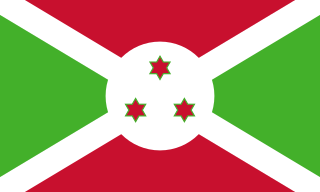
Chiloglanis is a genus of upside-down catfishes native to Africa. These species have modified lips and barbels that form a suckermouth. They also have a naked (scaleless) body. Sexual dimorphism has been reported in Chiloglanis. The adult males of many of these species have elongate anal and caudal fins. Also, males may have an enlarged humeral process.
Chiloglanis asymetricaudalis is a species of upside-down catfish native to Burundi, the Democratic Republic of the Congo, Rwanda and Tanzania where it can be found in the Rusizi and Luiche Rivers. This species grows to a length of 76 centimetres (30 in) SL.

The Pangani suckermouth is a species of upside-down catfish native to Kenya and Tanzania. This species grows to a length of 7 centimetres (2.8 in) SL.
The Kalombo suckermouth is a species of upside-down catfish endemic to Tanzania where it occurs in the Kalambo River. This species grows to a length of 4.4 centimetres (1.7 in) TL.
Chiloglanis lufirae is a species of upside-down catfish endemic to the Democratic Republic of the Congo where it is found in the Lufira River drainage. This species grows to a length of 10 centimetres (3.9 in) SL.
The mbozi suckermouth is a species of upside-down catfish endemic to Tanzania where it occurs in the Lake Rukwa drainage. This species grows to a length of 5.7 centimetres (2.2 in) TL.
The Lake Rukwa suckermouth is a species of upside-down catfish native to Tanzania and Zambia where it is found in the Lake Rukwa drainage. This species grows to a length of 4.8 centimetres (1.9 in) TL.
The three-lobed suckermouth is a species of upside-down catfish native to the Lake Rukwa drainage of Tanzania and Zambia. This species grows to a length of 5.2 centimetres (2.0 in) TL.
Chiloglanis angolensis is a species of upside-down catfish endemic to Angola where it occurs in the Cuango River and the Rio Coroca. This species grows to a length of 5.6 centimetres (2.2 in) SL.
Chiloglanis benuensis is a species of upside-down catfish native to Cameroon and Nigeria where it occurs in the Niger, Bénoué and Chad River systems. This species grows to a length of 3.8 centimetres (1.5 in) TL.

Chiloglanis cameronensis is a species of upside-down catfish native to Cameroon, Equatorial Guinea and Gabon where they are found in the coastal rivers. This species grows to a length of 5.5 centimetres (2.2 in) TL.
Chiloglanis congicus is a species of upside-down catfish endemic to the Democratic Republic of the Congo where it occurs in the lower Congo River basin. This species grows to a length of 7.5 centimetres (3.0 in) TL.
Chiloglanis disneyi is a species of upside-down catfish endemic to Cameroon where it is found in the Mungo and Manyu River basins. It may also occur in the Cross River basin of Nigeria. This species grows to a length of 3.5 centimetres (1.4 in) SL.
Chiloglanis fasciatus, the Okavango suckermouth, is a species of upside-down catfish native to Angola, Botswana and Namibia where it is found in the Kwando River and the Okavango River and Delta. This species grows to a length of 6.4 centimetres (2.5 in) TL.
Chiloglanis lamottei is a species of upside-down catfish native to Guinea, where it is found at Mount Nimba, and Côte d'Ivoire, where it occurs in the Cavally River. This species grows to a length of 5 centimetres (2.0 in) SL.

Chiloglanis niloticus is a species of upside-down catfish native to the Nile River and Niger River. This species grows to a length of 4.5 centimetres (1.8 in) SL.
Chiloglanis occidentalis is a species of upside-down catfish that is native to western Africa. This species grows to a length of 6.2 centimetres (2.4 in) TL.
Chiloglanis pojeri is a species of upside-down catfish native to the Democratic Republic of the Congo where it occurs in the Lualaba River drainages and to Tanzania where it can be found in the Lake Tanganyika basin. This species grows to a length of 7 centimetres (2.8 in) TL.
Chiloglanis sanagaensis is a species of upside-down catfish endemic to Cameroon where it is only found in the Sanaga River basin. This species grows to a length of 4.3 centimetres (1.7 in) SL.
Chiloglanis voltae is a species of upside-down catfish native to Burkina Faso, Cameroon, Ghana, Nigeria and Togo, where it occurs in the Volta and Bénoué River systems. This species grows to a length of 2.7 centimetres (1.1 in) TL.







